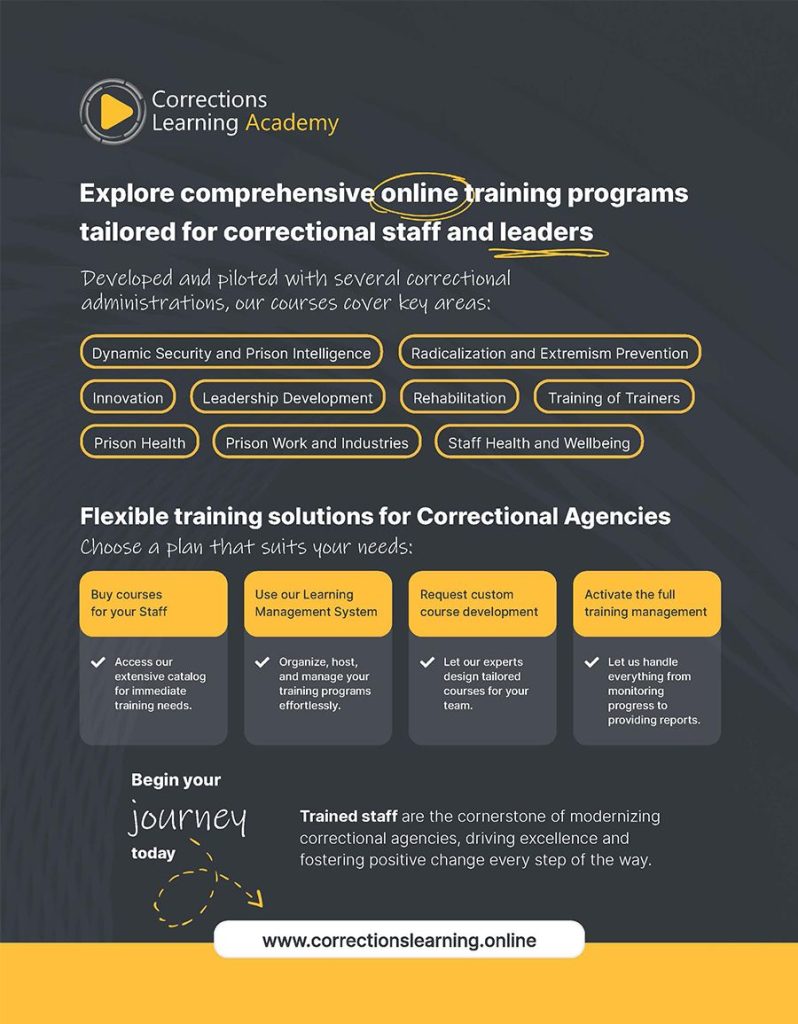Interview
Isabelle Condé
CEO of SGP, Prison Management Solutions
With extensive experience in managing Public-Private Partnership (PPP) projects and leading innovative initiatives, Isabelle Condé discusses the challenges facing the Brazilian prison system and how PPPs can contribute to more efficient, sustainable, and socially responsible correctional facilities.
With your experience in implementing public-private partnerships
in the prison sector, what do you consider to be the biggest challenges facing the prison system in Brazil? To what extent can PPPs help overcome these difficulties?
IC: There are several challenges facing Brazilian states when it comes to the prison system. In terms of operational staff, there is a shortage of civil servants compared to the high rate of growth in imprisonment. Often, when public tenders are launched, they are already obsolete in the face of the system’s needs.
What’s more, our legislation sometimes makes it impossible to respond within the time needed to purchase materials, maintenance supplies, equipment and new technologies.
Other challenges facing the prison system in Brazil include prison overcrowding, inhumane conditions, high recidivism rates, the control of prison establishments by criminal factions, the lack of sufficient investment in the sector and limited resources for reinvestment and improvements in infrastructure and maintenance.
Brazil’s prison population is one of the largest in the world. According to Brazil’s Penal Information Report (Relipen) released by the Ministry of Justice and Public Security, by October 2024 the country had a prison population of 663,906 incarcerated individuals, while the total capacity of prison units is 488,951 places, resulting in a deficit of 174,436 places.
The core principle of a Public-Private Partnership is to ensure efficiency and compliance with Brazilian legislation, with overcrowding explicitly prohibited. While public prisons focus primarily on creating new spaces, PPP contracts guarantee that projects will be designed, executed, and operated with a clear commitment to their social purpose. As a result, rehabilitation becomes the central focus of these initiatives.
The experience of monitoring the operation of the only prison PPP in operation in Brazil for six years provided an accurate diagnosis of the system’s shortcomings. This knowledge was essential for developing more efficient studies and projects for the implementation of the Rio Grande do Sul government’s new prison PPP. Delving deeper into these challenges revealed that the difficulties are not restricted to the complexity of the issue, but encompass structural, social and economic factors.
How do you assess the impact of new architectural and technological
approaches on prison management and the re-socialisation of inmates used in PPP projects in Brazil?
IC: To develop effective solutions, it is essential to experience the daily realities of prison life. This hands-on perspective helps move beyond a narrow focus on security, incorporating functional considerations that enhance risk mitigation and improve operational efficiency.
For a prison PPP with the main objective of offering a safe environment with a focus on resocialisation, the daily movement of inmates becomes a major point of attention.
Architecture plays a crucial role in designing interconnected, controlled spaces that allow the movement of people in custody to be monitored and directed towards structured activities outside their cells. In this way, PPP prison architecture supports routines of work, education, legal assistance, and social services — fostering a daily life that mirrors civic responsibilities, even within a correctional setting.
Brazil’s two prison PPP projects have adopted the “fishbone” architectural model, where buildings are arranged in parallel blocks connected by a central axis. This design not only accommodates a large
number of individuals safely and efficiently but also facilitates access to and supervision of all areas of the prison, making internal movements more organised and easier to monitor. Additionally, this layout improves circulation, ventilation, and natural lighting throughout the facility.
Another key advantage is the ability to separate and classify individuals by pavilion, enabling the creation of security zones tailored to different risk levels. This organisational approach, combined with integrated technology and automation, optimises prison management and contributes to a safer, more functional environment.
What advantages of public-private partnerships would you highlight in particular for the modernisation of prison infrastructure in Brazil?
IC: The core principle of a Public-Private Partnership is to ensure efficiency and compliance with Brazilian legislation. This efficiency spans all stages of the contract — from project conception to construction and operation — distinguishing PPPs from other contracting models where services are delivered in a more fragmented manner.
During the project design phase, in addition to meeting legal requirements, best operational practices are evaluated and incorporated, alongside contractual performance indicators that are essential for measuring service quality. The Service Level Agreement (SLA) allows for mutually agreed deadlines for corrective maintenance, ensuring fairness and accountability. This approach guarantees that the facility operates efficiently, providing a high-quality working environment for both state personnel and concessionaire employees. At the end of the contract, the prison is returned to the government in full working order, preserving the initial investment.
A prison PPP also serves as a learning laboratory for the public sector, with lessons learned feeding into continuous improvement across other initiatives.
It is important to highlight that the integration of activities and environments, combined with the strategic use of technology, contributes to cost reduction and significant savings over the contract’s duration.
In the construction phase, there is a strong focus on using high-quality materials that support durable and efficient maintenance, as the concessionaire is responsible for the facility’s upkeep throughout the
contract period. This commitment drives in-depth studies of construction methodologies, encouraging innovation in engineering and the development of resilient, long-lasting materials.
Materials and equipment are subject to monitoring by the granting authority during the contract, allowing for knowledge-sharing and the replication of best practices in future public projects. In this way, a prison PPP also serves as a learning laboratory for the public sector, with lessons learned feeding into continuous improvement across other initiatives.
I believe that PPPs can play a pivotal role in addressing the challenges of the Brazilian prison system, provided they are implemented transparently, governed by robust regulations, and aligned with clear social objectives.
Isabelle Condé
CEO of SGP, Prison Management Solutions
Isabelle Condé is an executive with extensive experience in managing Public-Private Partnerships and infrastructure projects. As the CEO of SGP | Soluções em Gestão Prisional, she leads innovative initiatives, including the implementation of the prison PPP in partnership with the Government of Rio Grande do Sul. Her career spans roles at GPA | Gestores Prisionais Associados, Mendes Pinto Empreendimentos, and Ribeirão das Neves City Hall, where she gained expertise in public management, design, construction, maintenance, and budget planning. Isabelle holds a degree in Architecture and Urban Planning, an MBA in Infrastructure, Concessions, and Public-Private Partnerships, and an International Professional Certification in PPP from APMG International. She has also specialised in Prison Architecture, Valuation and Expertise Engineering, and Architectural and Urban Restoration. Currently, she is pursuing a master’s degree in Sustainable Urban Infrastructures.
Advertisement



